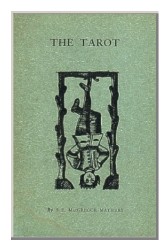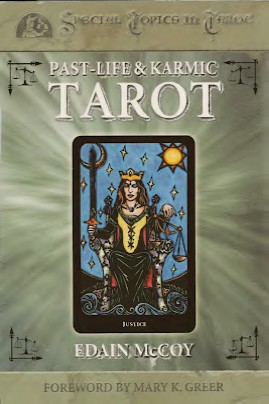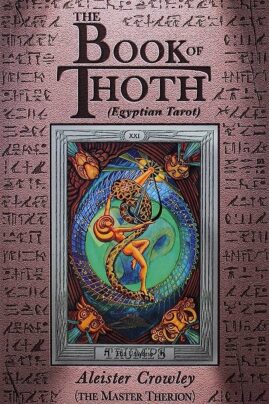The Tarot – S. L. MacGregor Mathers
The Tarot
Its Occult Significance, Use in Fortune-Telling, and Method of Play, Etc.
By S. L. MacGregor Mathers
To enter, within the limits of this short treatise, upon any long inquiry into the History of Cards is utterly out of the question; and I shall therefore confine myself to examining briefly into what relates to their most ancient form, the Tarot, or Tarocchi Cards, and to giving, as clearly and concisely as possible, instructions which will enable my readers to utilise them for fortune-telling, to which they are far better adapted, from the greater number and variety of their combinations, than the ordinary cards. I shall also enter somewhat into their occult and Qabalistical significations.
The term “Tarot”, or “Tarocchi”, is applied to a pack of 78 cards, consisting of four suits of 14 cards each (there being one more court car d than in the ordinary packs the Cavalier, Knight, or Horseman),
and 22 symbolical picture-cards answering for trumps. These latter are numbered from 1 to 21 inclusive, the 22nd card being marked Zero, 0. The designs of these trumps are extremely singular, among them being such representations as Death, the Devil, the Last Judgment, &c.
The idea that cards were first “invented’ to amuse Charles VI of France is now exploded; and it is worthy of note in this connection that their supposititious “inventor” was Jacques Gringonneur, an Astrologer and Qabalist. Furthermore, cards were known prior to this period among the Indians and the Chinese. Etteilla, indeed, gives in one of his tracts on the Tarot a representation of the mystical arrangement of these cards in the Temple of Ptah at Memphis, and he further says:
“Upon a table or altar, at the height of the breast of the Egyptian Magus (or Hierophant), were on one side a book or assemblage of cards or plates of gold (the Tarot), and on the other a vase, etc.” This idea is further dilated upon by P. Christian (the disciple of Eliphas Levi), in his “Histoire de la Magie,” to which I shall have occasion to refer later. The great exponents of the Tarot, Court de Gebelin, Levi, and Etteilla, have always assigned to the Tarot a QabalisticoEgyptian origin, and this I have found confirmed in my own researches into this subject, which have extended over several years.
- Hughes Willshire, in his remarks on the General History of Playing-Cards, says: “The most ancient cards which have come down to us are of the Tarot’s character. These are the four cards of the Musée Correr at Venice; the seventeen pieces of the Paris Cabinet (erroneously often called the Gringonneur, or Charles VI cards of 1392), five Venetian Tarots of the fifteenth century, in the opinion of some not of an earlier date than 1425; and the series of cards belonging to a Minchiate set, in the possession of the Countess Aurelia Visconti Gonzaga at Milan, when Cicognara wrote.”
- A. Chatto, in his “History of Playing-Cards,” says that cards were invented in China as early as A.D. 1120, in the reign of Seun-Ho, for the amusement of his numerous concubines.


 Đang tải dữ liệu
Đang tải dữ liệu







Chia sẻ ý kiến của bạn